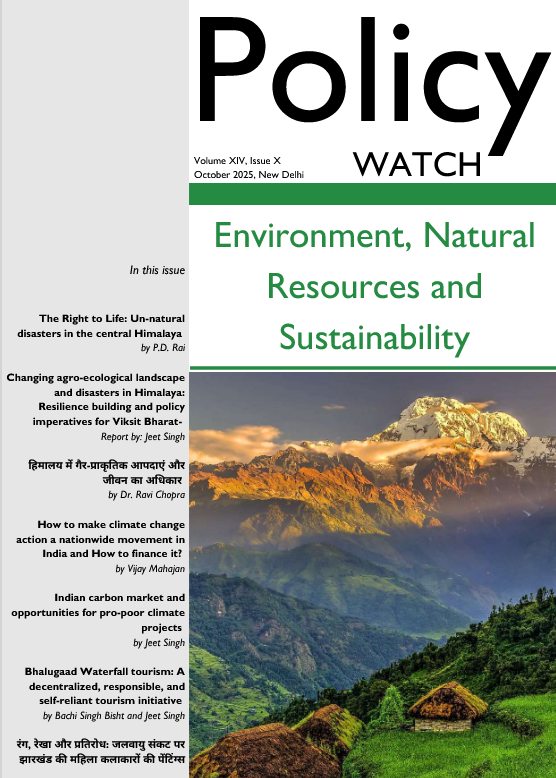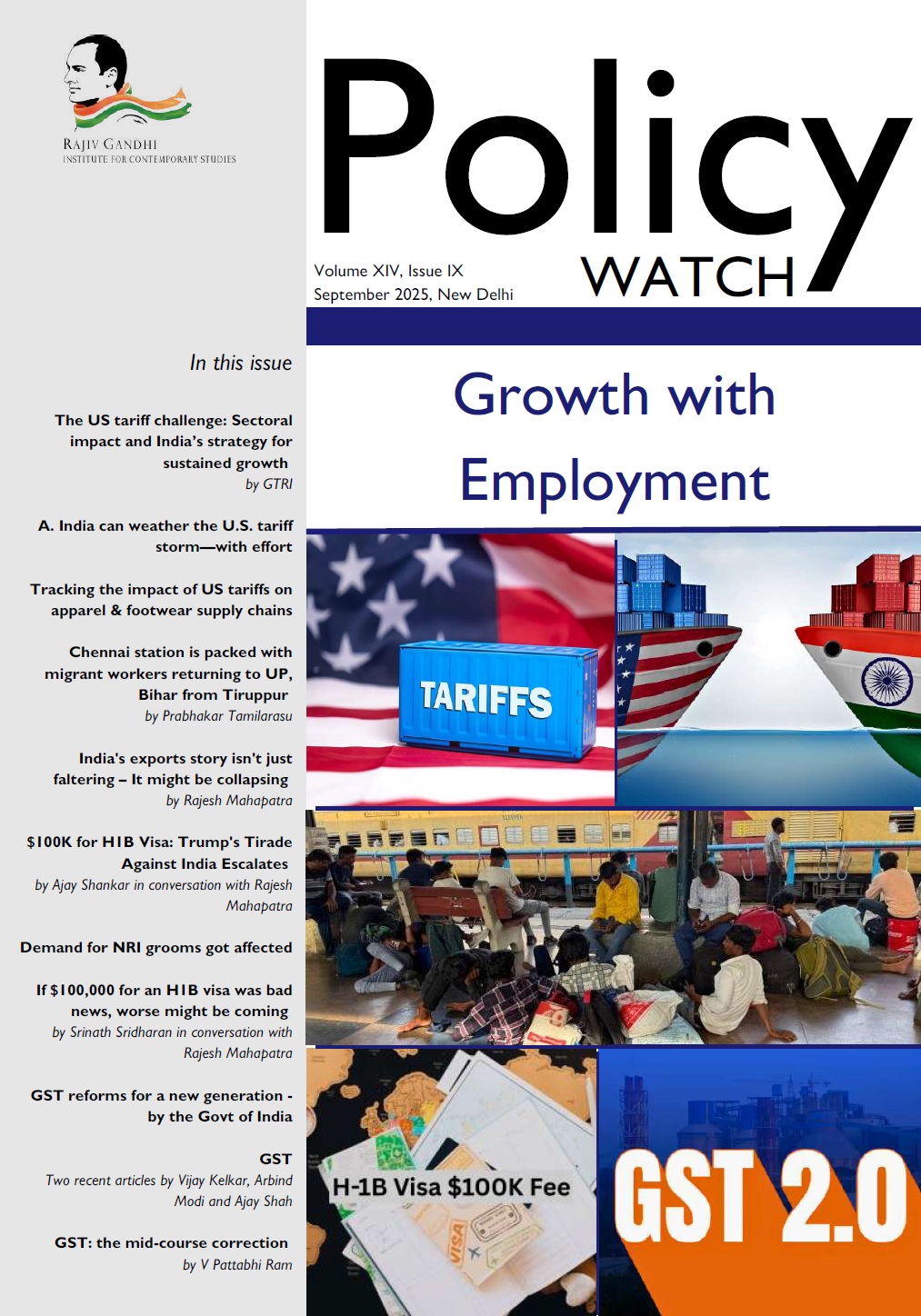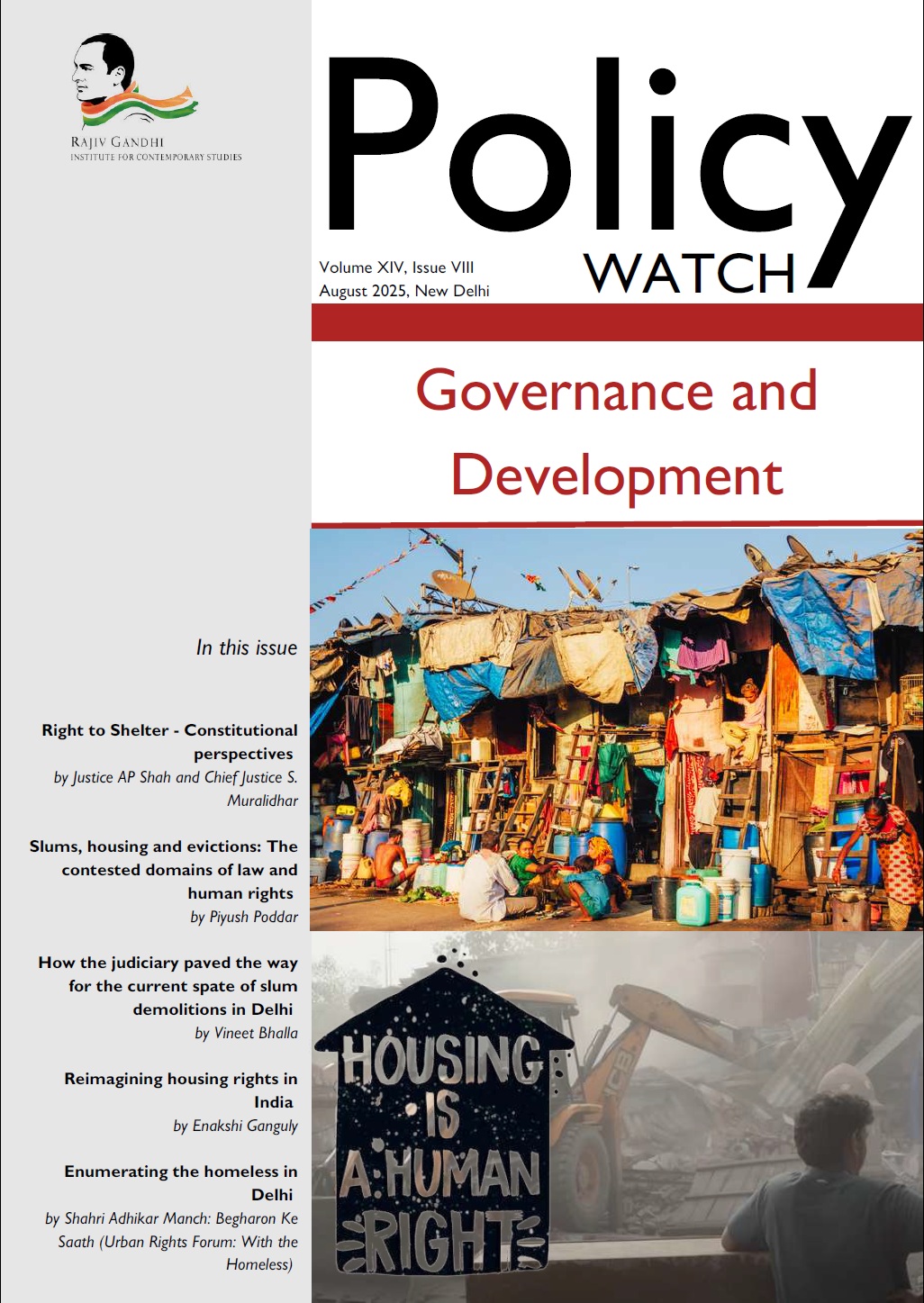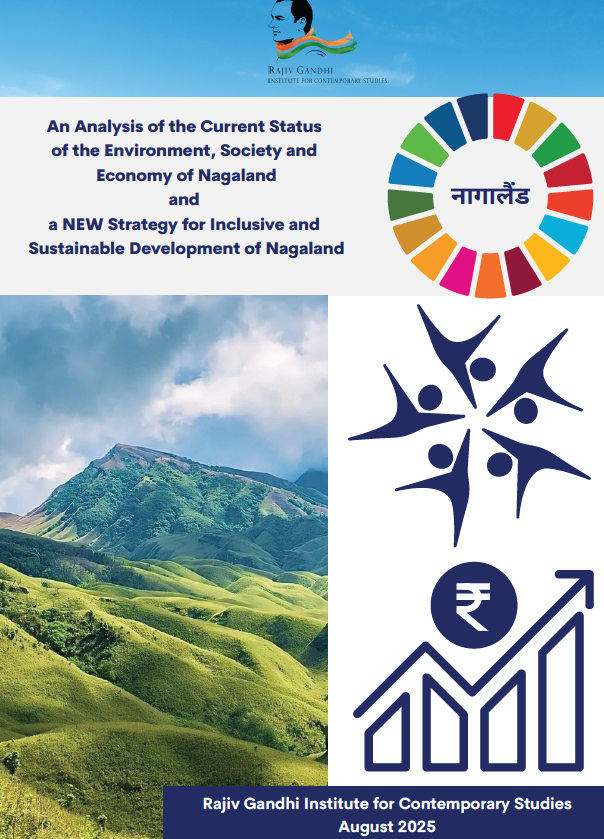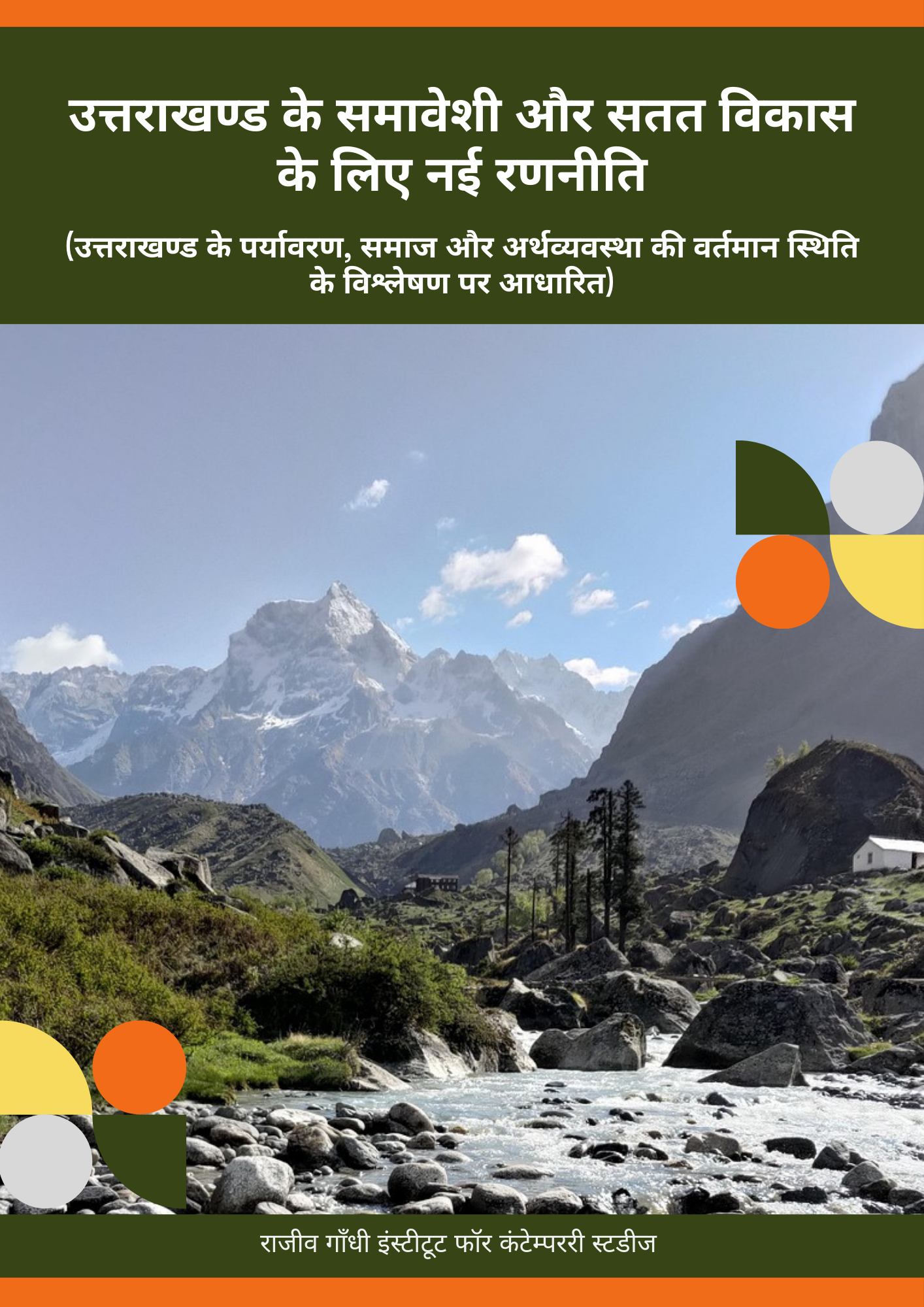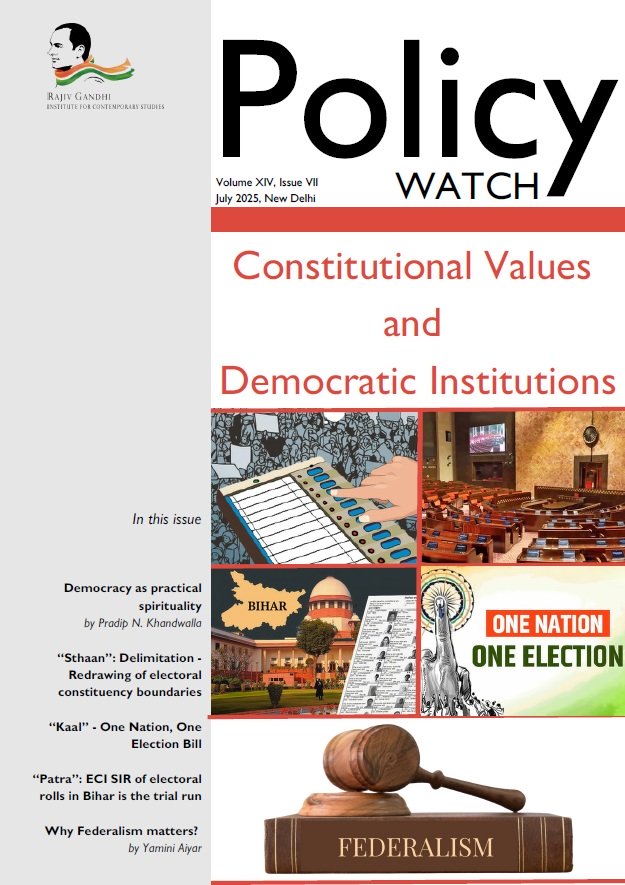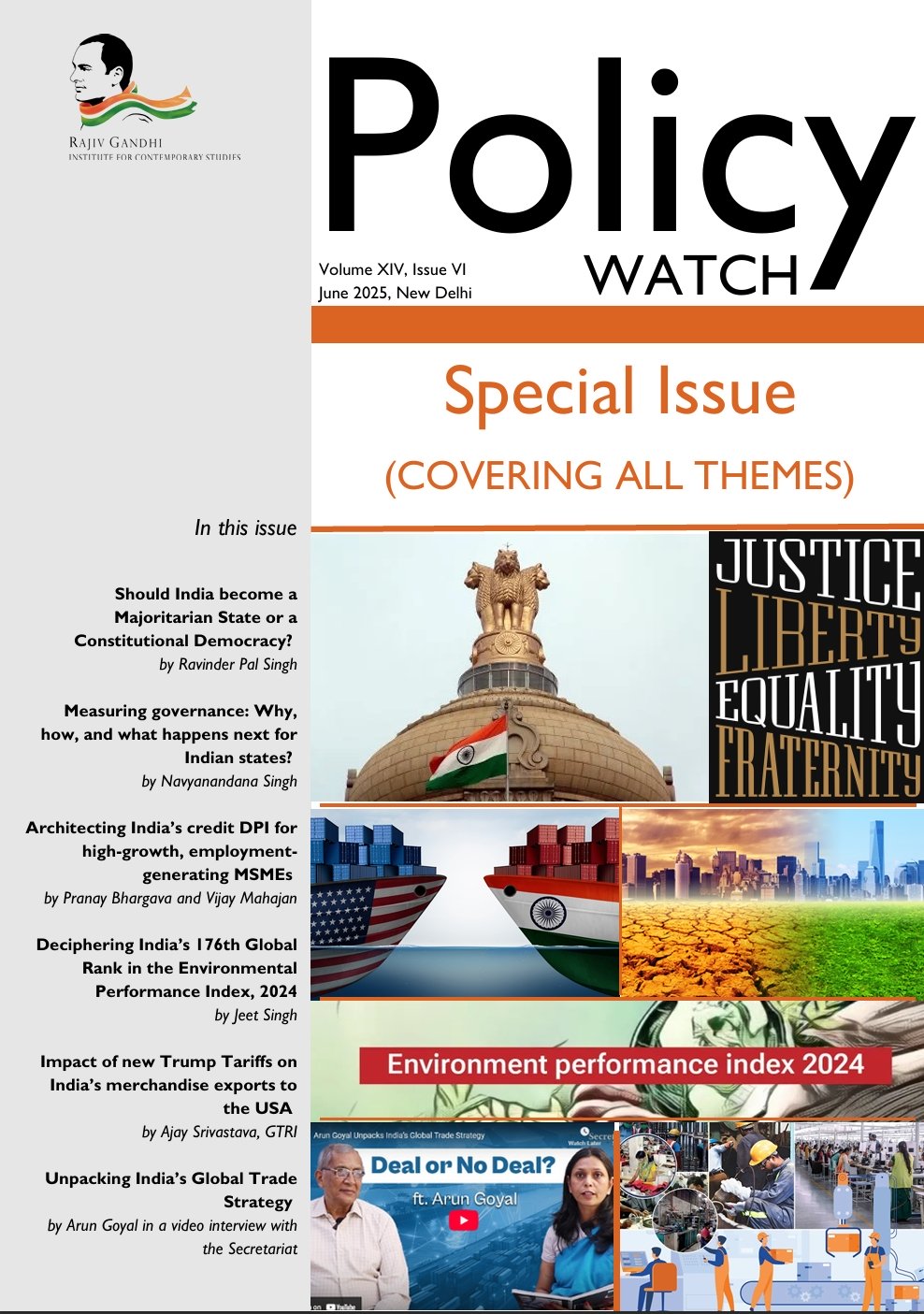This issue of the Policy Watch is on the theme, Environment, Natural Resources and Sustainability. The year 2025 witnessed yet another devastating monsoon with a very high number of extreme rainfall, flash floods and loss of lives and livelihoods across the Indian Himalayan Region and more focused in western Indian Himalayan Region.
This policy watch carries the first three articles which attempt to analyze climatic, scientific, infrastructural, economic and social factors responsible for disasters in the Himalayan region. Following three articles discuss climate change adaptation and resilience opportunities in India. Finally, we carry paintings by 19 young women on climate change and gender.
The first article is by political thinker and ex Member of Parliament from Sikkim Mr. P.D. Rai. The article entitled ‘The Right to Life: Un-natural Disasters in the Central Himalaya’ interrogate how infrastructural expansion, socio-ecological degradation, regulatory failure, and technocratic ‘solutions’ have created compounded vulnerabilities and disaster risk in states like Himachal Pradesh and Uttarakhand, transforming natural hazards into “un-natural” catastrophes. He argues that the “un-natural” disasters plaguing the Central Himalayas are a stark indicator that development at the cost of ecology is unsustainable and ethically indefensible. The growing vulnerability, exacerbated by human interventions, directly challenges the right to life for millions of inhabitants.
The second article is a report of 12th Sustainable Mountain Development Summit (SMDS-XII) held in Dehradun on 26 and 27 September 2025. The summit focused on ‘Changing Agro-Ecological Landscape and Disasters in Himalaya: Resilience Building and Policy Imperatives for Viksit Bharat’ has been put together by Mr. Jeet Singh, Head of RGICS Research who personally participated in this summit. The summit organized 7 different knowledge sessions and a ‘Mountain Legislators Meet’. This summit produced an eleven point declaration for sustainable development of all Himalayan states of India.
The third article is by senior scientists and veteran development professional Dr. Ravi Chopra. This Hindi article is the transcript of a speech delivered by Dr. Chopra in a webinar organized by RGICS on 9th September 2025 on the occasion of the Himalaya Day. This article attempts to critically evaluate geology, hydrology and geography of the Himalayan region and map them with the social and economic developmental activities in the region leading to disasters.
The fourth article by Mr. Vijay Mahajan, Director, RGICS suggests a roadmap for making climate action a nationwide movement to strengthen climate change adaptation and resilience of people. This data driven analysis estimates that India needs Rs. 24.51 lakh crore in next five years for climate resilience and adaptation. More importantly the article carefully identifies different funding sources to meet this financial demand. Overall, the article suggests four inter-connected strategies to build a nationwide movement on climate action. These include public education on adverse effects of climate change, strengthening of local institutions, strengthening capacity of local self governance institutions and strengthening the capacity of local scientific, technical and CSOs for A&R efforts.
The fifth article by Mr. Jeet Singh, Head of Research, RGICS entitled ‘Indian Carbon Market and Opportunities for Pro-Poor Climate Projects’ discusses India’s efforts to set emission target to its own industries. He argues that the Carbon Credit Trading Scheme (CCTS) of India is a long awaited policy document that was issued in 2023. By incorporating both compliance and voluntary carbon mechanisms, the CCTS has attempted to comprehensively envision India’s strategy to reduce its emission. The CCTS will broaden the base of India’s fight against climate change and its attempt to achieve social, economic and ecological resilience. No doubt, effective implementation of CCTS will substantially contribute in achieving the target of net zero by 2070 and Nationally Determined Commitments (NDCs) by 2030.
sixth article is a case study of community led Bhalugaad waterfall tourism documented by environmental activists Mr. Bachi Singh Bisht and Mr. Jeet Singh, RGICS. This is an exemplary initiative located in Nainital district Uttarakhand that strikes a balance between environmental conservation, livelihood, and self-reliance by local people. The management committee of this waterfall tourism is linked with three forest councils, which not only conserve the local environment but also use the income to uplift their forests and communities. This innovative effort in Dhari and Ramgarh blocks has helped control migration and provided opportunities for new local entrepreneurs. Working with the government, the committee is also enhancing water conservation at the river’s source.
Finally, we have reproduced paintings of 19 young women from Jharkhand which were exhibited by M/s Deshaj Abhikram and ASAR from 6 to 8 October 2025 in Madhupur (Jharkhand). Each of these pictures highlights issues related to climate justice and gender equality.
Policy Watch: Environment, Natural Resources and Sustainability - October 2025
Send download link to:

